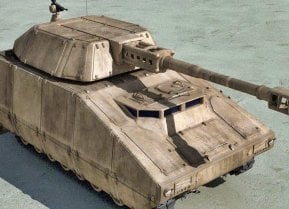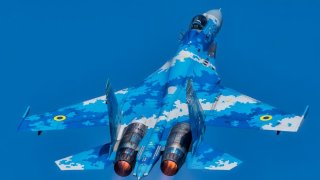Su-27 Flanker: The Unforgettable Russian Fighter Jet
Like many Soviet-era weapons and aircraft being deployed in Russia’s ongoing invasion of Ukraine, the Su-27 fighter platform is being used by both sides of the conflict.
Like many Soviet-era weapons and aircraft being deployed in Russia’s ongoing invasion of Ukraine, the Su-27 fighter platform is being used by both sides of the conflict. Russian and Ukrainian pilots have gone head-to-head in these Cold War-era jets, reminding aviation buffs and military experts alike as to why the North Atlantic Treaty Organization (NATO-designated “Flanker” continues to play a critical role in the aerial arena.
A Brief Overview Of The Su-27’s History
Designed to effectively counter America’s fourth-generation F-14 Tomcat and F-15 Eagle platforms, the Su-27’s origin story dates back to the Soviet Union. When the former USSR discovered the U.S. Air Force was developing the F-15 under its “F-X” program, Soviet engineers went to work to design an indigenous fighter.
The requirements surrounding the new fighter were quite lofty. The USSR called for a long-range jet with good short-field performance, solid armament capabilities, and a fast speed of at least Mach-2.0 (times the speed of sound). Since these specifications were so challenging to meet, the development program was split into two, culminating in the Su-27 and MiG-29. The Russian manufacturer Sukhoi designed its T-10 prototype in the late 1970s, which strongly resembled the F-15’s specifications.
By the mid-1980s, the new prototype was debuted at the Paris Air Show.
The Flanker-A’s Specs And Capabilities
Over the years, the Su-27 has evolved into several newer variants, including the Su-34 fighter bomber and the fourth-generation plus Su-35. By the time the Flanker was first used in operations, the fighter emerged as the largest frames long-range interceptor of its time. The Su-27 airframes can function autonomously in combat or in addition to deep-penetration strike platforms.
Additionally, this platform can provide close ground support – a critical asset during wartime. In terms of specs, the Flanker was quite formidable when it first entered service. Each jet features a rounded noise, dual-engine integration, and a nearly horizontal wing-body structure that helps lower the aircraft’s signatures. Many analysts today recognize the American-made fifth-generation F-22 Raptor as among the greatest platforms to ever take to the skies. Part of the reason why the Raptor is so sophisticated is that it possesses a tiny radar cross-section. The Su-27 also sports a small cross section which makes it challenging for enemy aircraft to detect.
The Flanker is powered by twin turbofan engines, which allow the fighter to reach a service ceiling of 18,000 meters with a flight range of more than 1,800 miles. Ordnance-wise, the Soviet jet can function as a “bomb truck” of sorts. As detailed by Airforce Technology, “The aircraft is equipped with a 30mm GSh-301 gun with 150 rounds of ammunition and a range of missiles, rockets and bombs mounted externally on ten hardpoints. The aircraft’s infrared search and track system, laser rangefinder, radar and helmet-mounted target designator provide detection, tracking and attack capability.”
In addition to a range of air-to-air missiles, the platform can carry air-to-ground weapons including aerial bombs, incendiary devices, cluster bombs, and aerial missiles.
Where Did The USSR’s Su-27 Flanker Jets End Up?
Prior to the collapse of the Soviet Union and the end of the Cold War, export variants of the Flanker were developed for client states, including Vietnam, Indonesia, and China. By the early-to-mid 1990s, the newly installed Russian Federation began developing advanced versions of the Su-27. Within a decade, Moscow improved the jet’s air-to-air capability with the introduction of the R-77 missile and new avionics. This sophisticated Su-27M variant was later re-classified as the Su-35.

Following the dissolution of the USSR, 72 Flanker fighters have remained in Ukraine’s territory. However, Kyiv has struggled to maintain its fleet of aging airframes. According to the Smithsonian Magazine, Kyiv really began to improve its fleet of Flankers in 2011 with the debut of the Su-27M1. These upgraded airframes have an enhanced ability to use unguided air-to-ground munitions, new navigation systems, and a radar with greater range.
About the Author
Maya Carlin is an analyst with the Center for Security Policy and a former Anna Sobol Levy Fellow at IDC Herzliya in Israel. She has by-lines in many publications, including The National Interest, Jerusalem Post, and Times of Israel. You can follow her on Twitter: @MayaCarlin.
All images are from Shutterstock.


